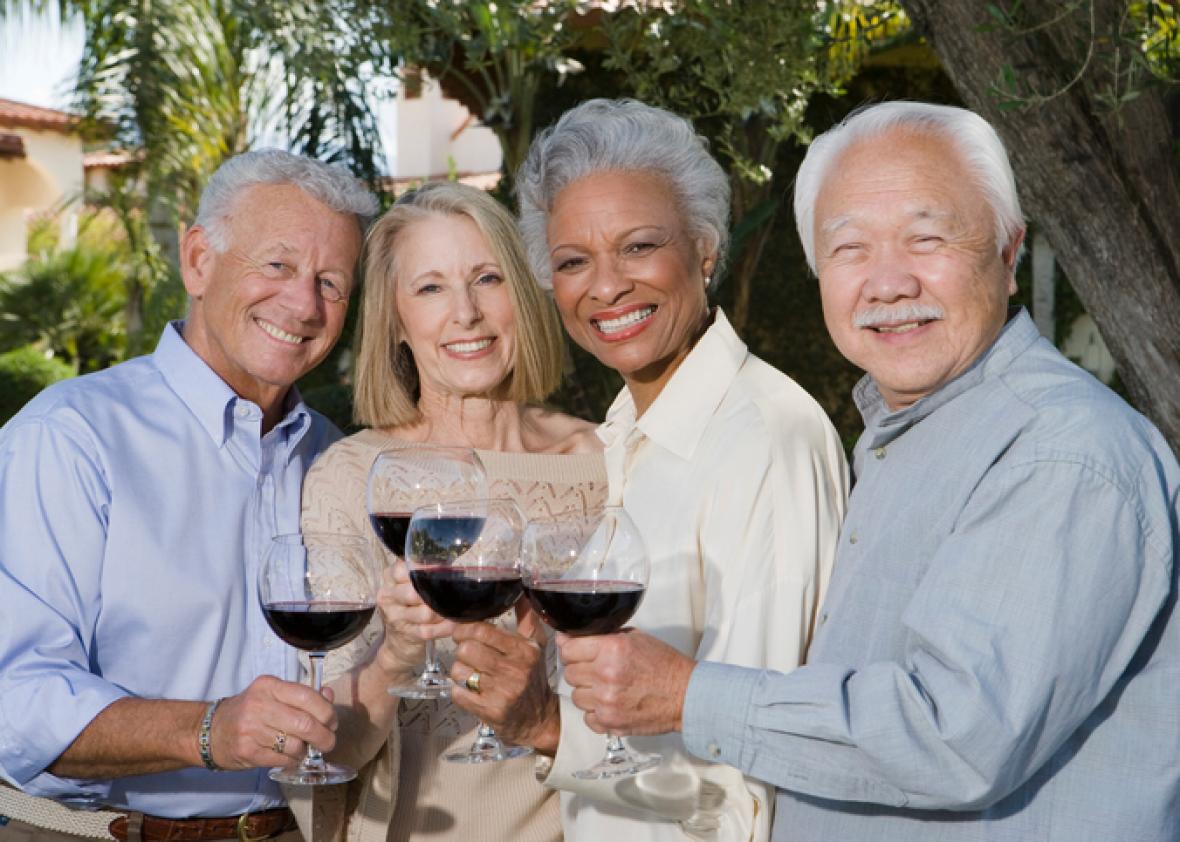Younger generations are closing the gender gap in drinking habits, according to a new meta-analysis of data from 68 studies. The authors of the study, which published this week in the British Medical Journal, assembled drinking statistics from 1948 to 2014 and calculated the male-to-female ratios of alcohol consumption, excess alcohol use, and alcohol-related harm. Men born in the early 20th century were more than twice as likely as women to drink and three times as likely to “drink alcohol in ways suggestive of problematic use”; those born in the late 20th century are just 1.1 times as likely to drink at all and 1.2 times as likely to overdo it.
Researchers from New South Wales University and Columbia University divided up the data by five-year “birth cohorts” to cover people who were born from 1891 to 2001. (The people in the last cohort can’t legally drink in the U.S. yet, but the data includes participants from all over the world. About two-thirds are from North America or Europe.) The authors found that men born from about 1946 to 1965—who started drinking in the ‘60s through ‘80s—were and are about twice as likely to drink alcohol as women their age.
Starting with people born around 1966, the gender gap in alcohol use has sharply narrowed. Men and women born in the late ‘80s and after are almost equally likely to drink, exhibit excess-drinking behavior like binging, and experience problems related to alcohol dependence, though men still have a slight edge. The analysis doesn’t delve into whether the closing gap is attributable to an increase in alcohol use and abuse among women, a decrease among men, or both.
Though it’s clear that men and women under 30 are drinking more like one another than their parents or grandparents, the study doesn’t account for changes in drinking habits over time. As Vocativ points out, “an 18-year-old drinker in 1948 and an 84-year-old drinker in 2014 would both simply be classified as someone born in 1930 and averaged together into the same group of drinkers. That means the study isn’t comparing gender disparities in 1948 with those in 2014.”
There are dozens of intersecting reasons why the drinking habits of women and men of more recent generations are more similar than those of their forebears: Women are having kids later and less often; women’s workforce participation has risen; cultural norms around alcohol and partying have shifted; women are attending college in greater numbers; alcohol companies are targeting marketing efforts at women. As such, the researchers note, alcohol-abuse interventions and prevention efforts should reflect the fact that women who are just starting their drinking careers now are nearly as likely as their male counterparts to develop a drinking problem.
